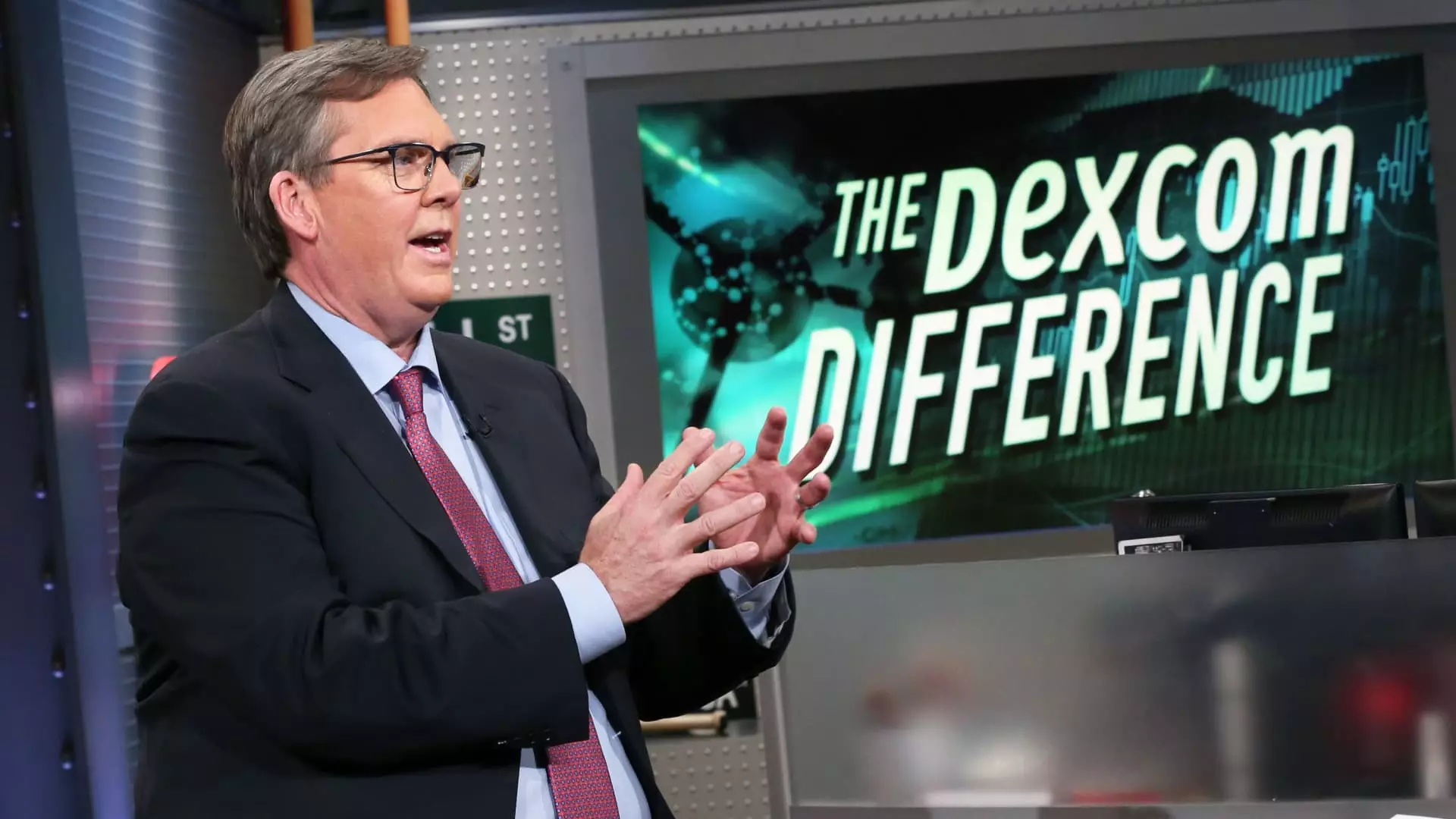Dexcom recently experienced a challenging quarter that left investors questioning the company’s trajectory. While the third-quarter earnings report showcased a beat on earnings per share (EPS) and modest revenue growth, the underlying trends reveal some concerning aspects. Specifically, the company reported an adjusted EPS of 45 cents, surpassing the expected 43 cents, and a total revenue of $994 million, edging out the anticipated $990 million. However, the slight increase in overall revenue masks a troubling statistic: a year-over-year decline in U.S. revenue, which dropped 2% to $713.6 million from $727.6 million in the prior year.
The disconnect between earnings and revenue highlights critical issues within Dexcom’s operational framework. Although global revenue showed growth of 2% compared to the previous year, the decline in U.S. revenue signifies potential challenges that could hinder future performance. Companies often face significant headwinds in their home markets, and for Dexcom, this could stem from setbacks such as increased competition, changing market dynamics, or internal structural challenges within their sales team.
CEO Kevin Sayer has pointed to these issues, noting that fewer new customer acquisitions and lower revenue per user have been problematic. This is concerning because an essential aspect of sustaining a growth trajectory is the ability to not just retain existing customers but also effectively attract new ones. Moreover, any decline in revenue per user may indicate that the company is struggling to provide compelling value propositions or is facing pricing pressures in an increasingly competitive landscape.
In tandem with the earnings report, Dexcom announced the retirement of Teri Lawver, its chief commercial officer. Changes in leadership can often signal a shift in company strategy. With Sayer stepping in to lead the commercial organization during the search for a new CCO, it is crucial for the company to ensure a seamless transition that addresses current issues while reinvigorating sales teams. As the company navigates this transition, it is vital for investors and stakeholders to monitor developments closely.
Adding to the complexity, Dexcom’s launch of its first over-the-counter product, Stelo, aimed at non-insulin-dependent adults, represents a strategic move to capture new market segments. However, the success of this initiative will depend heavily on the effectiveness of the sales team and the marketing strategies employed to engage potential customers.
Despite these challenges, Dexcom has maintained its fiscal year guidance, estimating revenue of between $4 billion and $4.05 billion. Yet, investors should note the previous downward revision from initial projections of $4.20 billion to $4.35 billion. This downward adjustment, fueled by earlier disappointing results, has already led to a sharp decline in share prices earlier this year.
While Dexcom’s latest quarterly results include positive elements, they also reveal significant challenges that need to be addressed quickly. The interplay between leadership changes, revenue fluctuations, and the competitive landscape will be pivotal in determining the company’s future stability and growth trajectory. Investors and market watchers will undoubtedly keep a close eye on how the company navigates these hurdles in the forthcoming quarters.

